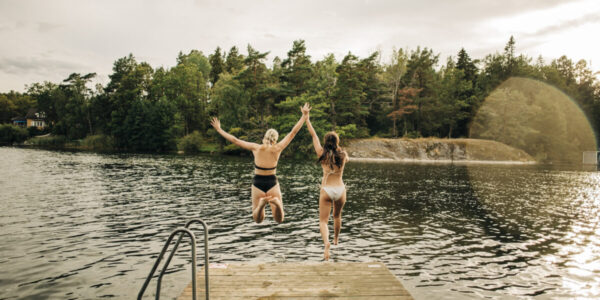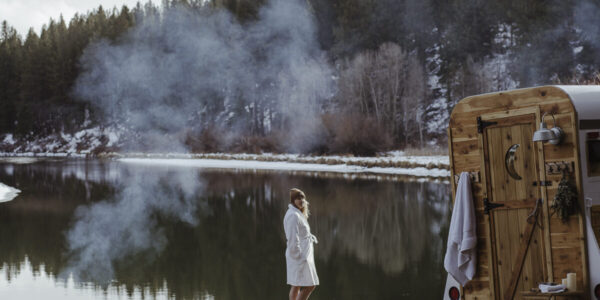
Everything You Need to Know to Teach Your Kids to Ski or Snowboard
Start your kids’ love affair with snow sports with these expert tips from a pro at the “Ivy League” of ski schools.
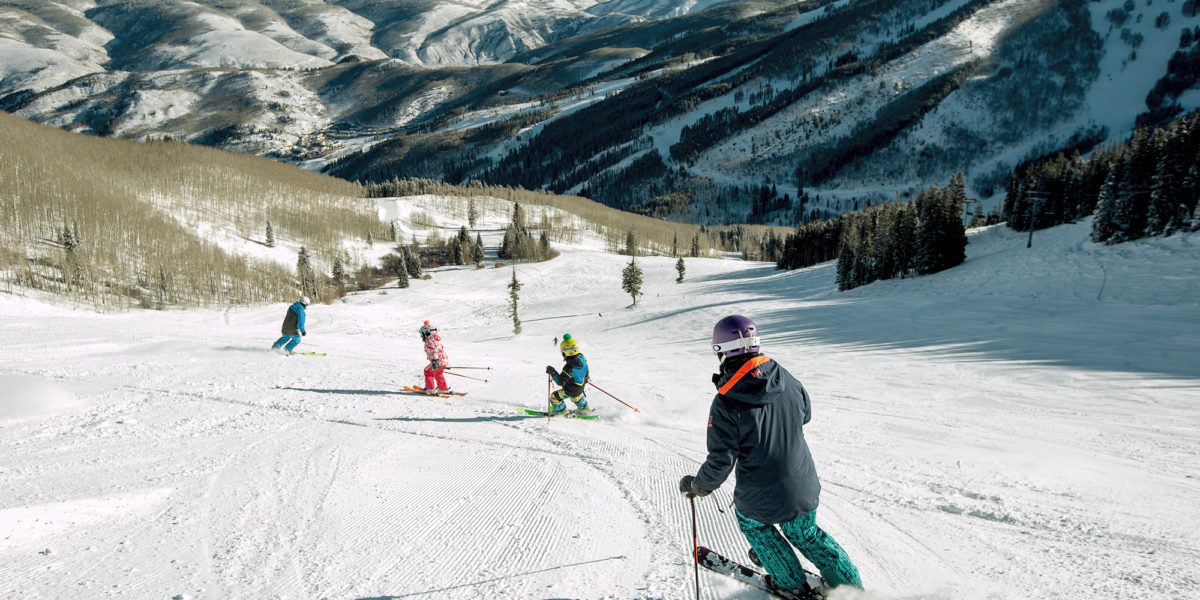
Courtesy of Beaver Creek/ Daniel Milchev
Ski trips are the highlight of the season in the region, and every Westerner looks forward to the day when they can introduce their future little rippers to the sport. But teaching your kids to ride can be a lofty task. That’s why we tapped the pros at one of the country’s most lauded ski schools—Beaver Creek—to help. Long regarded for its educational programs, the resort has the most terrain dedicated to beginners. In 2018, the Vail mountain expanded its offerings, adding a new training area with SmartTerraine (expertly-sculpted snow features that help riders hone skills like turning, speed control, and carving). And with its roster of kid-friendly offerings, it’s no surprise that the school sees thousands of young riders-in-training every year. But no matter where you go, Greg Willis—Beaver Creek’s senior director of skier services—provides core tips to get your youngins schussing in no time.
Pick a Resort with Variety
The best learning resorts deliver on two things: a mix of terrain for different skill levels and lots to do beyond the slopes. Look for resorts with a good mix of beginner, intermediate, and expert terrain that’s spread out across the mountain—from top to bottom. Resorts with beginner terrain and learning areas at the very top of the mountain allow first-timers to take advantage of those addictive views, Willis says: “The memories made here will overshadow any old magic carpet experience.” Having a variety of runs ensures kids can practice and progress, while the seasoned skiers in your brood get their fun, too. Make sure the resort has acreage allotted not just to beginners, but also to learning. Bonus if those areas are serviced by a gondola. “Kids can get comfortable with sliding, stopping, and turning on snow before getting on a traditional lift,” adds Willis. Beyond the mountain conditions, it’s just as important to look for things to do besides riding. “Mix the fun with the skill-building to maximize learning,” he says. Go to a ski resort with a base village that has attractions like ice skating rinks, kids’ museums and activity centers, tubing hills, and kid-friendly restaurants. And be sure to book other on-the-snow activities, like snowshoeing and sleigh rides, so kids can appreciate the full spectrum of winter fun.
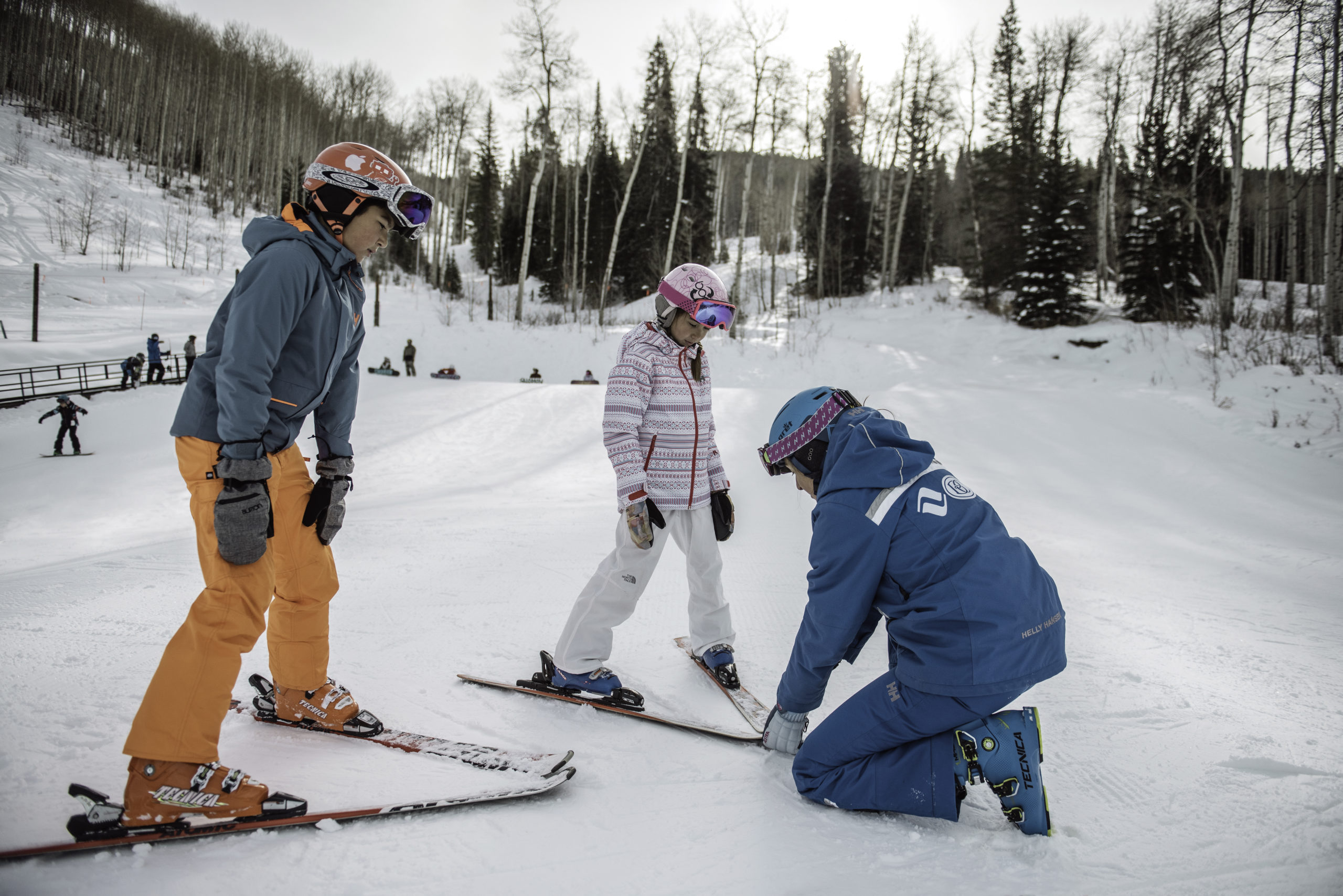
Courtesy of Beaver Creek/ Tom Cohen
Consider Lessons
Ace skiers may want to do their own teaching, but it’s generally recommended to start with a lesson to establish good riding habits. “Instructors are trained at movement analysis and can provide feedback,” says Willis, adding that ski pros use proven progression strategies to help beginners build skills while minimizing falls. “Learning from a non-professional can take a physical and emotional toll,” he says. Instructors know how to work with all ability levels, ages, and different personalities to meet kids where they’re at. Plus, your young riders will have fun making ski friends their same age and motivated by the built-in activities that come in with lessons. Beaver Creek recommends three days of classes to build a solid foundation and “gain ownership of the sport.” After that, kids are usually comfortable enough to tackle beginner runs with their families.
Know When and How to Start
There’s no magic age—every parent will know when their kid has the cognitive and physical abilities needed to hit the slopes. Most ski schools have programs for kids as young as 3 (some take 2-year-olds). Age will determine what they do once on the mountain, though. “For toddlers, ‘play’ is very important—keeping it light and fun will go a long way,” says Willis. “There are many years in their future to develop more refined skills, so at this age, it’s more about ensuring they want to go again.” At Beaver Creek, toddlers spend time doing arts-and-crafts and yoga in between lessons that focus on whole-body movements. For older newbies—like tweens to teens—it’s important to talk through questions and goals and to help them reach milestones that are important to them. At that age, private lessons may be most beneficial, as the instructor and the kid partner up to create a tailored lesson plan. Once you drop them off at ski school, don’t helicopter. Instead, meet the instructor so you feel comfortable with them, and then empower your child with autonomy by steering clear for all or part of the class.
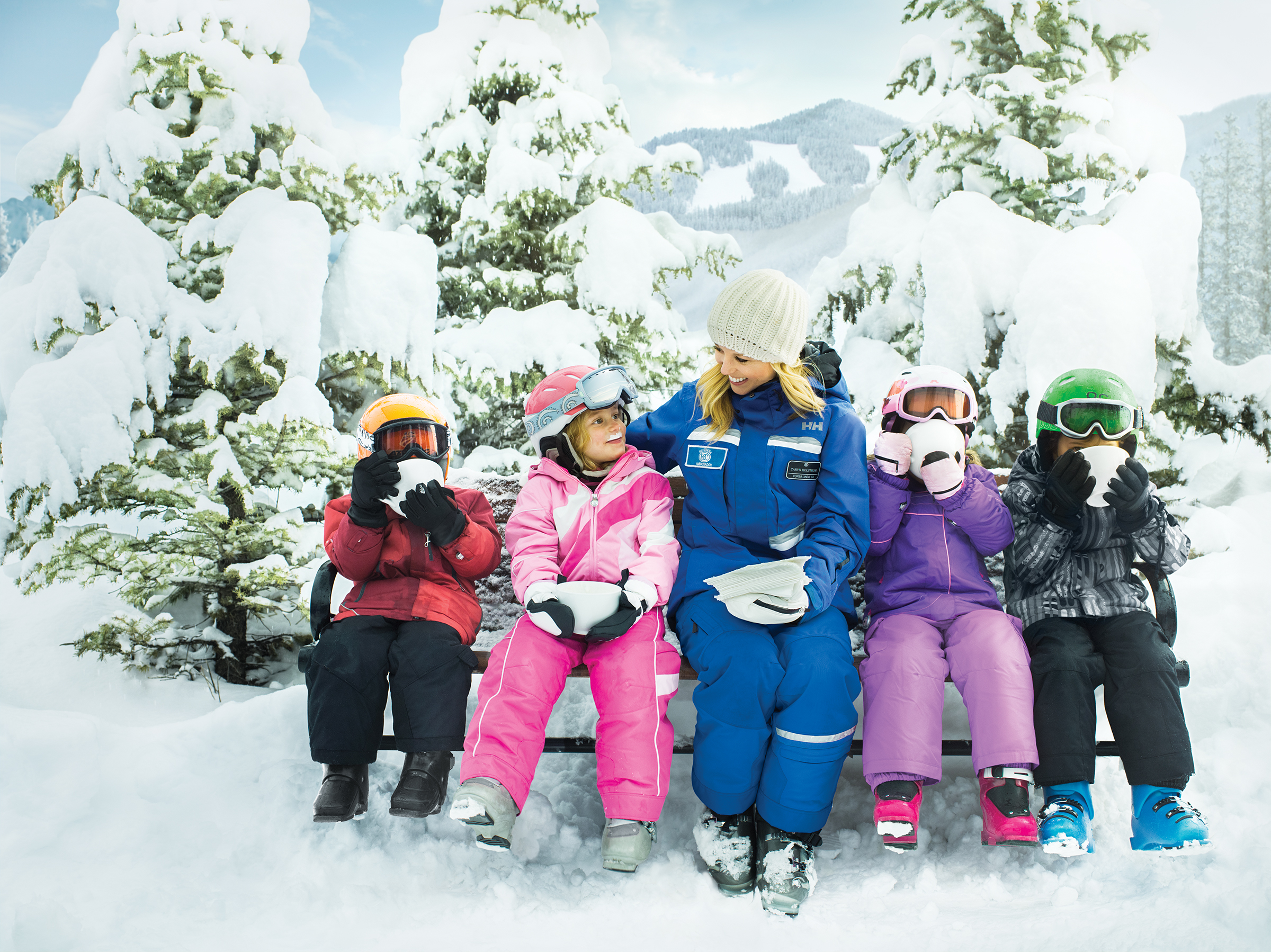
Courtesy of Beaver Creek
Don’t Over-Terrain Them
You’ll know whether your children feel comfortable on the slopes, if they need to be pushed a little, or when they really need a break. Trust your instincts, and follow them. Willis says you definitely don’t want to “over-terrain” (leveling up before they’re ready) beginner skiers. “Parents are often so excited to make family skiing a part of their vacation that they rush children to the terrain that they like to ski,” he says. “Over-terraining children can create fear and even result in an injury that may push them away from the sport entirely.” Ask your kids’ instructor for suggestions on runs to practice learned skills and tips for continuing their progress.
Make It Fun
At every stage, the goal is to keep things light and enjoyable. Play games on the chairlift to make the time go by faster. Give kids stickers for accomplishing goals on the hill. After those initial lessons, keep the momentum going. Let your kid show off what they’ve learned on a family run. Nothing too taxing, though: Kids will be tired toward the end of the day. Tackling big runs can easily lead to over-terraining. Three days might be about all your kids can handle for their first trip, so instead of stretching your vacation, try to plan for another trip in the season—even if it’s to a smaller and more affordable mountain closer to home.
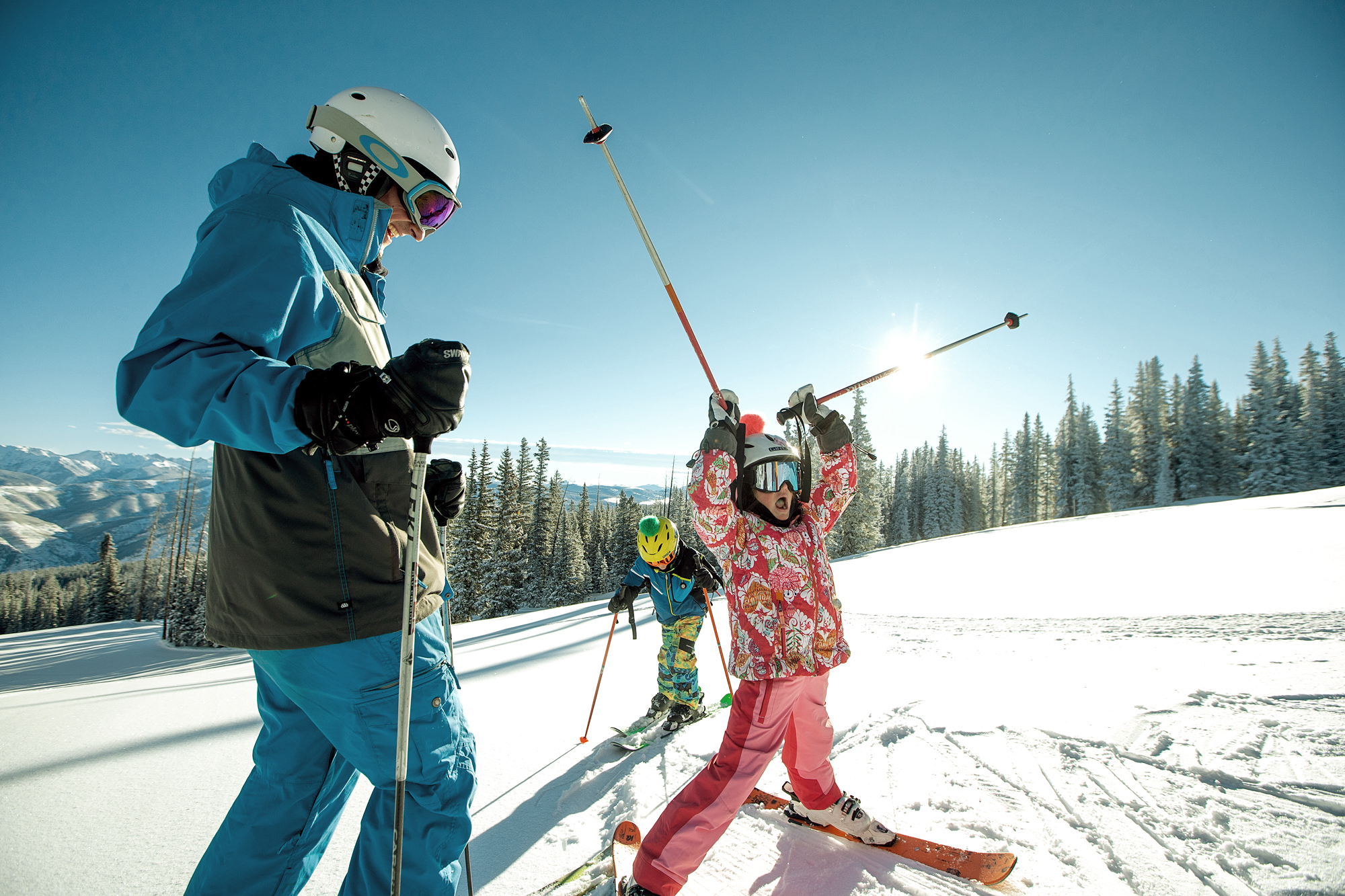
Courtesy of Beaver Creek/ Daniel Milchev
Gear Up
We only recommend things we love. If you buy something through our site, we might earn a commission.
“A good riding experience for children starts with the clothing,” says Willis. When they’re comfy and warm, they can focus on the sport, stay safe, and have a good time. Here are the basics you need to keep your babies happy and safe on the slopes.
Water-and Wind-Proof Ski Jacket
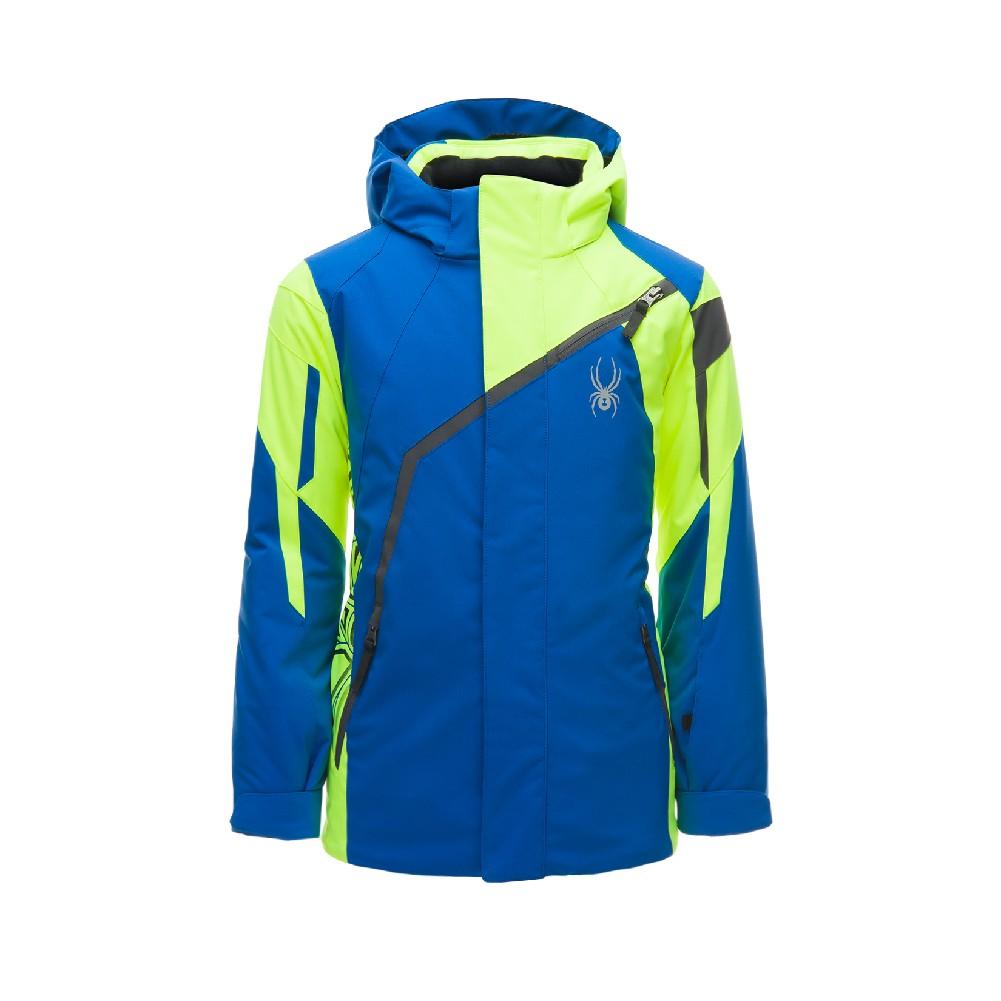
Courtesy of Spyder
Insulation and waterproof and windproof materials are no-brainers—but also pay attention to the bells and whistles. Look for a style with a tall neck and powder skirt, both of which create barriers from wind and snow, plus a removable hood so snow can’t pile up there and then make its way down your little one’s back. If your kid is growing fast, get more bang for your buck with an interchangeable 3-in-1 jacket (Columbia makes some great ones) or one that expand by allowing you to let out an inch or two (again Columbia is good here, but also Obermeyer). For older kids, invest in a Spyder model. The brand excels at warmth, water-resistance, and useful extras. The boys’ Challenger, for example, comes with a mesh goggle pocket and trusty 3M Thinsulate insulation. The little boys’ version has sleeves that can be extended up to 1.5 inches.
Thermal Layers
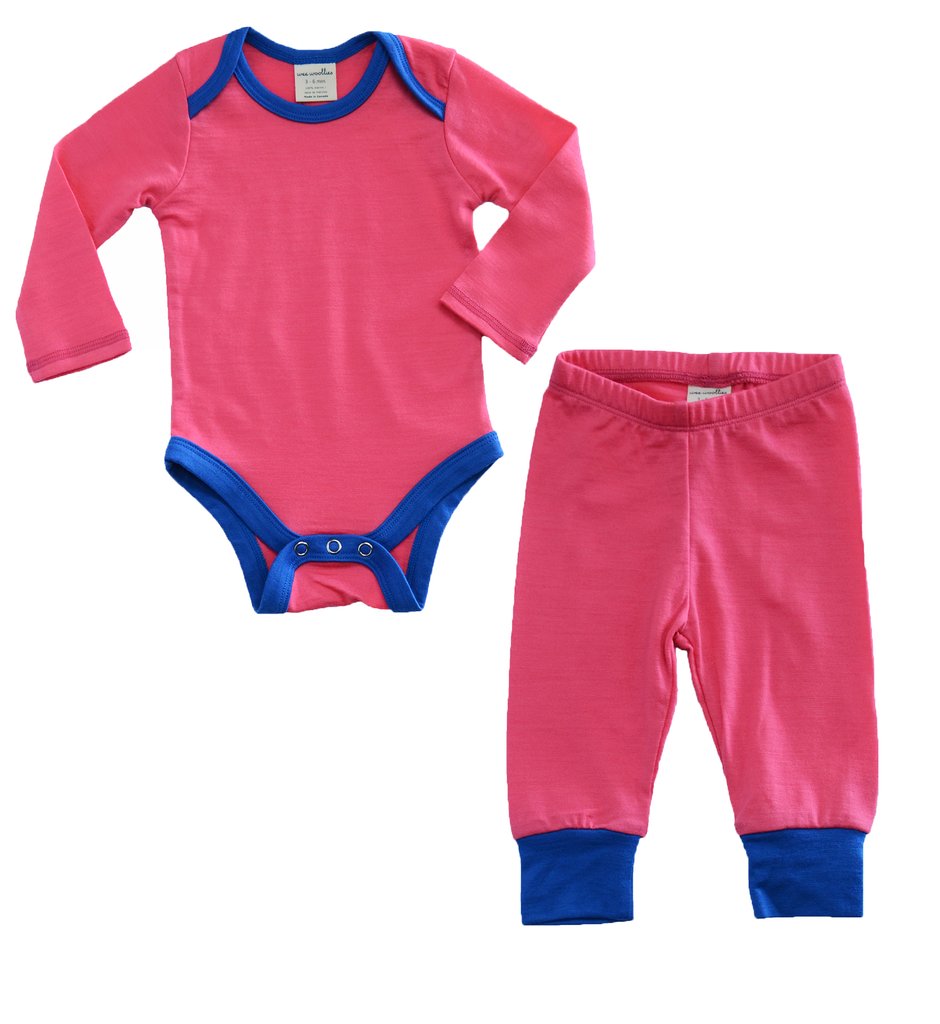
Courtesy of Wee Woolies
Good base layers are your kids’ first line of defense from overheating or over-chilling. Merino wool pieces perform best when it comes to trapping heat and wicking sweat, so tiny skiers don’t end up with damp clothes close to the body. Merino pieces are also lightweight, soft, and comfy, with natural antimicrobial properties. Buy the right size so they fit close to the skin for maximum efficiency. Wee Woolies specializes in merino thermals for kids up to age 10, and they’re made in B.C. (using pure New Zeland wool), so the makers know a thing or two about battling the cold. Plus, the line is super cute.
Waterproof Pants
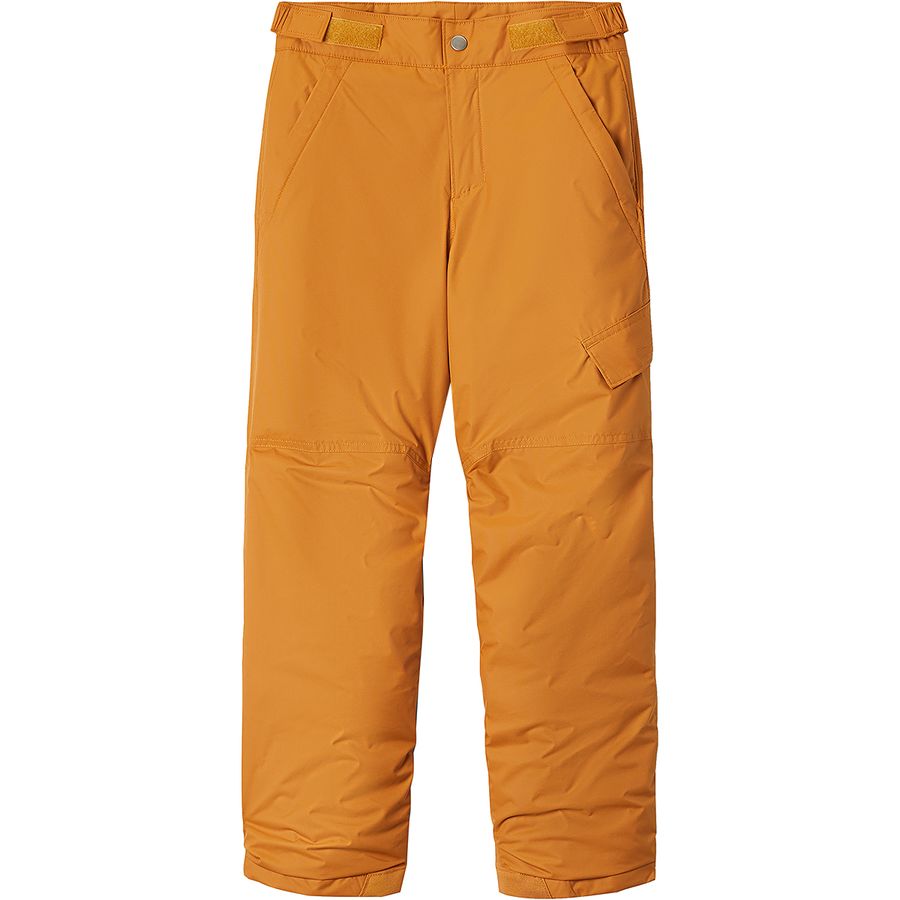
Courtesy of Columbia
Don’t skimp in this department. Kids spend a lot of time sitting on snow and icy lifts; they need pants that are completely waterproof (look for at least 12000mm waterproof rating). Also look for high breathability and insulation ratings, articulated knees, ankle gaiters, adjustable waist, thigh vents, and pockets.
Waterproof Gloves or Mittens
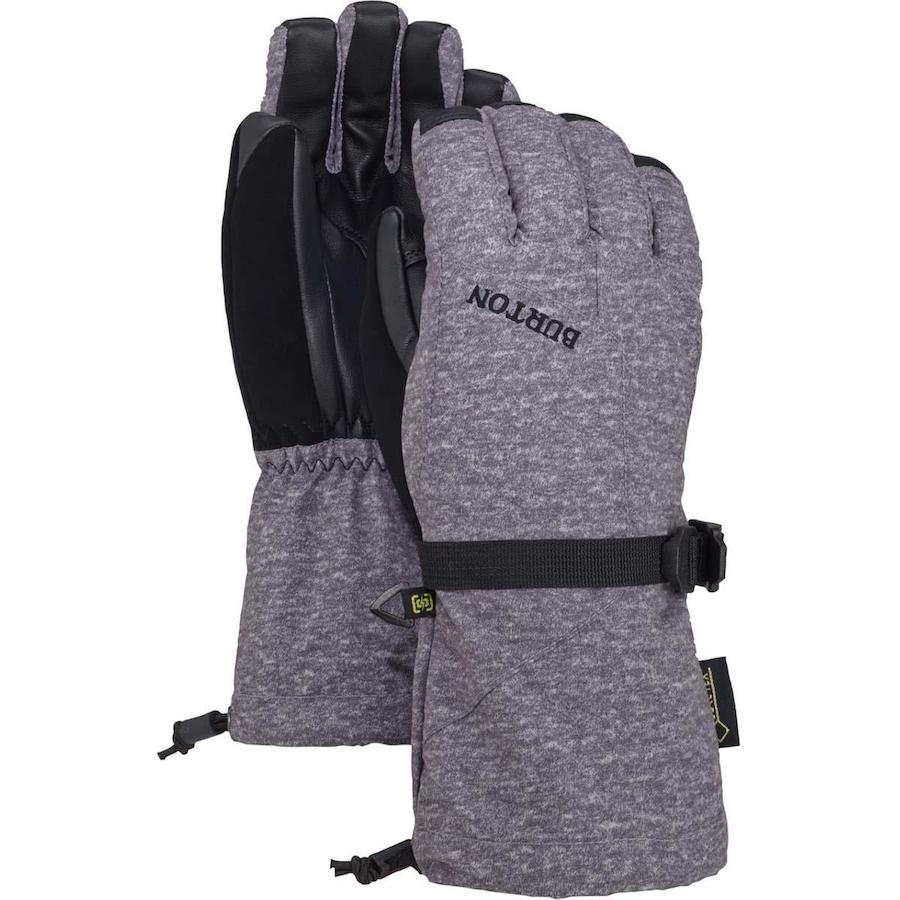
Courtesy of Burton
Whether you go for gloves or mittens, the key is to make sure they are waterproof. “This is especially important for beginners and will come in handy when getting up from the snow.” While mittens tend to keep hands warmer, gloves give kids better dexterity while learning the ropes. Burton makes some of the best gloves you’ll find, and these have the trusted Gore-Tex tech for maximum warmth and dryness without compromising breathability. The lining is made of comfy microfiber, Toughgri-coated paws hold up well, the gloves have an inner name tag, and there are wrist leashes to prevent loss. Still, it’s always a good idea to bring an extra pair.
Neck Gaiter or Balaclava

Courtesy of BUFF USA
Williams says a neck gaiter or a full-head balaclava is essential to have on-hand as well to protect little rippers against the elements. The O.G. of this category is the BUFF, and they make styles that come in merino wool or with a strip of fleece for ultimate versatility. And, it’s still compact enough to easily stuff in any pocket. Use your kids’ BUFF to layer up on extra-cold-days, keep wind off rosy cheeks, tame hair under a helmet—or even to wipe runny noses. Get two per child.
Boots
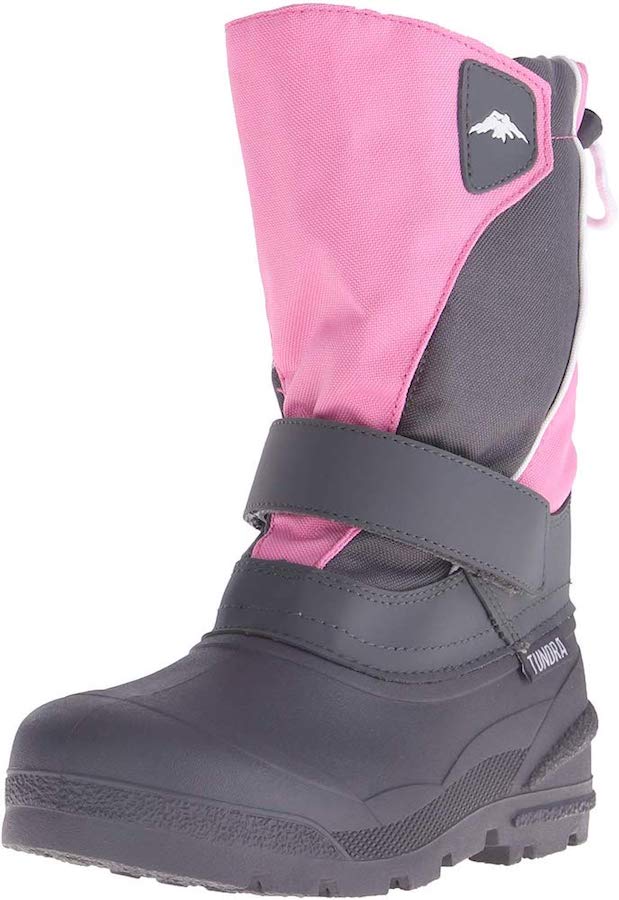
Courtesy of Tundra Boots
Good winter boots are hard to find. Between the glut of snow boots on the market and the difficulties of fitting ski boots, the tasks are overwhelming. For snow boots, you’ll want to strike a balance between affordability and quality. There’s no way those slippers are going to fit for longer than one season, so you don’t want to splurge. Tundra’s Quebec styles run at about 50 bucks with slip-proof soles, water-resistant uppers, and easy-to-pull-on straps. As far as ski boots, it’s probably best to rent for the first time. Once you know your kid is sold, look to Roces’ Idea Up Adjustable Ski Boots, which have expandable shells and stretchy liner to grow up to six sizes—along with all the must-haves for a good beginner ski boot: flexibility for ease in carving and otherwise controlling the skis, padded liner for warmth and comfort, and quality materials to stand up to serious ripping over the years.
Skis or Snowboard
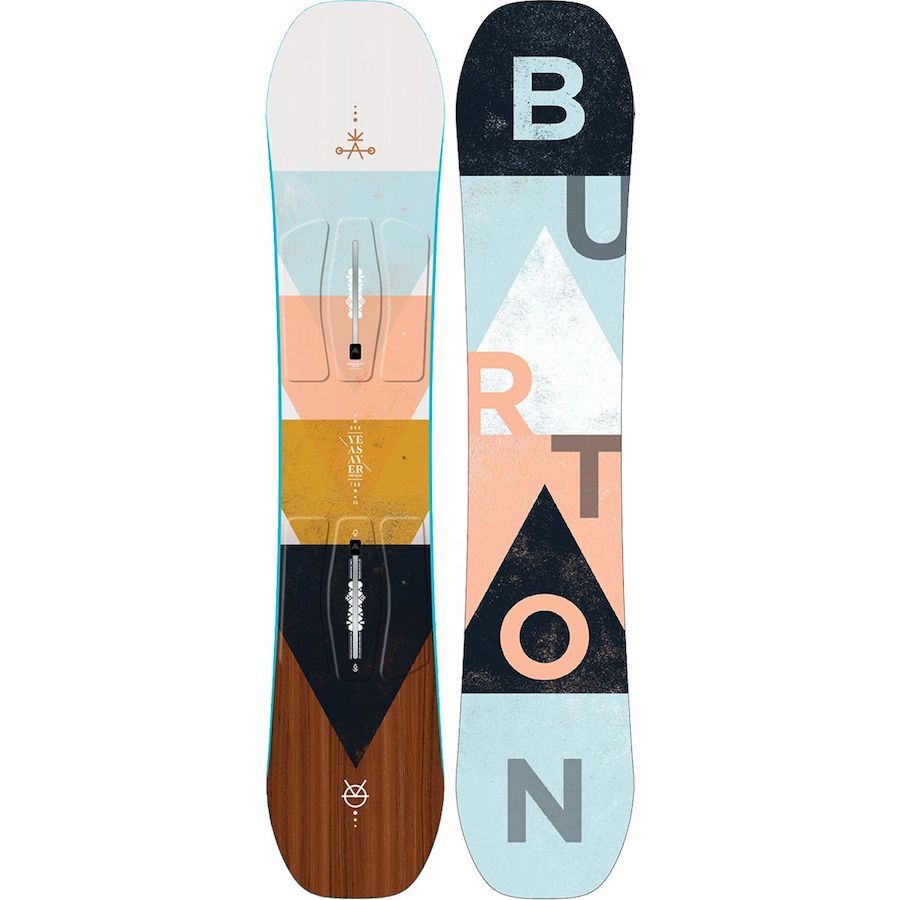
Courtesy of REI Co-Op
When kids are starting, it’s best to rent. You want to make sure your kid likes the sport and finds their niche (maybe they’re more into snowboarding than skiing) before you invest. When you’re ready to buy, shop REI. Their Junior Snowsports Trade-In Program allows members to trade in kids’ skis, boots, and bindings that are less than two years old for 20% off the replacements.
